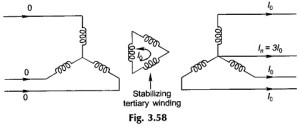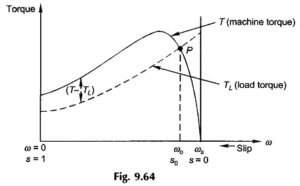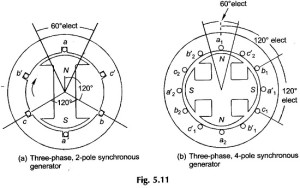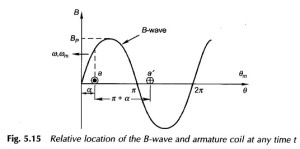DC Machine Applications:
Whenever the application of any machine is considered, its operating characteristics along with its economic and technical viability as compared to its competitors are the essential criteria. For a DC Machine Applications, of course, the main attraction lies in its flexibility, versatility and ease of control. This explains why in spite of its rather heavy initial investment it still retains its charm in strong competitive industrial applications. In the world, today, around 25% of the motors manufactured are dc motors.
With the advent of various power electronic devices, there is no doubt that the importance of a dc generator has gone down. Now, for ac to dc transformation, the dc generator as part of an ac-to-dc motor-generator set has to compete with SCR rectifiers and various other types of controlled power electronic devices which usually are less costly, compact, relatively noise-free in operation and need minimum maintenance, but suffer from the disadvantages of having poor power factor, harmonic generation, poor braking, etc. However, some of the important DC Machine Applications include–dynamometers, welding, cross-field generators for closed-loop control systems, tachogenerators, etc. Separately-excited generators are still in use for a wide output-voltage control such as in the Ward-Leonard system of speed control.
In dc series motor the starting torque is very high, up to five times the full-load torque. It may be interesting to note that the maximum torque in a dc motor is limited by commutation and not, as with other motors, by heating. Speed regulation of a dc series motor can be varied widely. For drives requiring a very high starting torque, such as hoists, cranes, bridges, battery-powered vehicles and traction-type loads, the series dc motor is the obvious choice. Speed control is by armature resistance control. Its closest rival is the wound-rotor induction motor with a rotor resistance control. But ultimately the availability and economics of a dc power is the deciding factor rather than the motor characteristics.
Compound motor characteristics depend naturally upon the degree of compounding. Shunt field of course restricts the no-load speed to a safe value. Its main competitor is the squirrel-cage high-slip induction motor. A compound motor has a considerably higher starting torque compared to a shunt motor and possesses, a droping speed-load characteristic. Compound dc motors are used for pulsating loads needing flywheel action, plunger pumps, shears, conveyors, crushers, bending rolls, punch presses, hoists, rolling mill, planing and milling machines, etc.
A dc shunt motor has a medium starting torque. Speed regulation is about 5-15%. It is used essentially for constant speed applications requiring medium starting torques, such as centrifugal pumps, fans, blowers, conveyors, machine tools, printing presses, etc. Owing to the relative simplicity, cheapness and ruggedness of the squirrel cage induction motor, the shunt motor is less preferred for constant-speed drives except at low-speeds. At low speeds, dc shunt motors are comparable with synchronous motors. The outstanding feature of a dc shunt motor however is its superb wide range flexible speed control above and below the base speed using solid-state controlled rectifiers.
In general, whenever a decision is to be made for a choice of a suitable motor for a given application, it is necessary to make specific, analytic, economic, and technical comparison of all practical choices. Finally, it should be mentioned to the credit of a DC Machine Applications that it still remains most versatile, flexible, easily controllable energy conversion device whose demand and need would continue to be felt in industries in future for various applications discussed above.





